This article delves into the must-have smart home devices that significantly enhance convenience, security, and energy efficiency for the modern family. These devices play a crucial role in creating a connected and efficient living environment that caters to the needs of today’s households.
1. Smart Speakers
Smart speakers act as the central hub of a smart home, enabling voice control over various devices, streaming music, and providing instant information. Their ability to integrate with other smart technologies makes them indispensable for modern families.
2. Smart Thermostats
These devices learn user preferences and adjust heating and cooling accordingly, promoting comfort while significantly reducing energy bills. With features such as remote access and energy usage reports, smart thermostats are essential for energy-conscious families.
3. Smart Security Cameras
Providing peace of mind, smart security cameras allow homeowners to monitor their properties remotely. Features like motion detection and night vision enhance security, making them a vital addition to any home.
4. Smart Door Locks
Smart door locks facilitate keyless entry and remote locking/unlocking, enhancing home security. They can also grant temporary access to guests, providing convenience for busy families.
5. Smart Lighting Solutions
Smart lighting allows homeowners to control brightness and color remotely, setting the perfect ambiance for any occasion. This feature not only improves energy efficiency but also enhances home security.
6. Smart Plugs
Transforming ordinary appliances into smart devices, smart plugs offer remote control and energy monitoring capabilities, making daily routines more efficient.
7. Smart Home Hubs
These hubs serve as the central control system for all connected devices, allowing seamless communication and automation, which enhances the overall user experience.
8. Smart Appliances
Smart appliances, such as refrigerators and washing machines, offer advanced features that allow for remote monitoring and control, optimizing energy usage and convenience.
9. Smart TVs and Entertainment Systems
Smart TVs provide access to streaming services and integrate with other smart home devices, enhancing the family entertainment experience.
10. Smart Blinds and Shades
Automated control over natural light and privacy is possible with smart blinds, which can be adjusted remotely or set on schedules for optimal efficiency.
11. Smart Irrigation Systems
These systems help conserve water by optimizing irrigation schedules and monitoring moisture levels, making them an eco-friendly choice for gardens and lawns.
12. Conclusion: Building a Smarter Home
Embracing smart home technology can significantly enhance the quality of life for modern families. By carefully selecting the right devices, families can create a connected, efficient, and secure living environment that meets their needs.
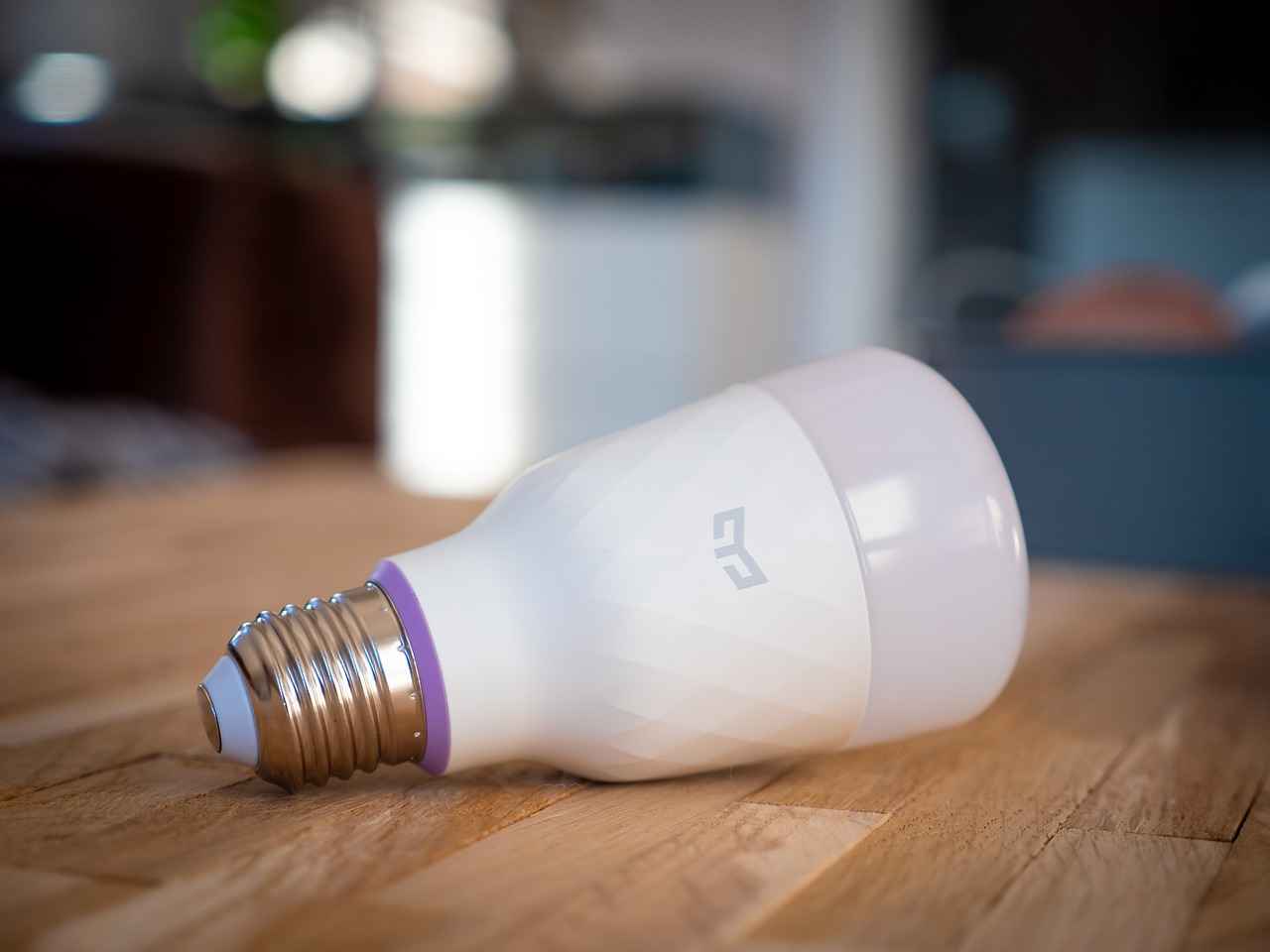
1. Smart Speakers
Smart Speakers have revolutionized the way we interact with technology in our homes. Serving as the central hub of a smart home, these devices allow users to control various smart gadgets through voice commands, making daily tasks more convenient and efficient.
With the ability to play music, set reminders, and provide real-time information, smart speakers have become indispensable in modern households. They integrate seamlessly with other smart technologies, creating a cohesive ecosystem that enhances the overall user experience.
One of the most significant advantages of smart speakers is their voice control capability. This feature allows family members to manage everything from lighting to temperature settings without lifting a finger. Imagine walking into your home and simply saying, “Turn on the lights” or “Set the thermostat to 72 degrees.” This level of convenience is particularly beneficial for busy families.
Moreover, smart speakers can serve as a music hub, allowing users to stream their favorite songs or podcasts with just a voice command. Many models support various streaming services, ensuring that everyone in the family can enjoy their preferred audio content.
In addition to entertainment, smart speakers also provide valuable information. Users can ask about the weather, news updates, or even trivia questions, making them a fun and educational tool for children and adults alike.
Furthermore, smart speakers often come equipped with smart assistant features, such as Amazon Alexa or Google Assistant, which can help manage daily tasks, answer questions, and control other smart devices in the home.
Ultimately, investing in a smart speaker can significantly enhance your home automation experience, providing a central command point for all your smart devices while making life easier and more enjoyable for the entire family.
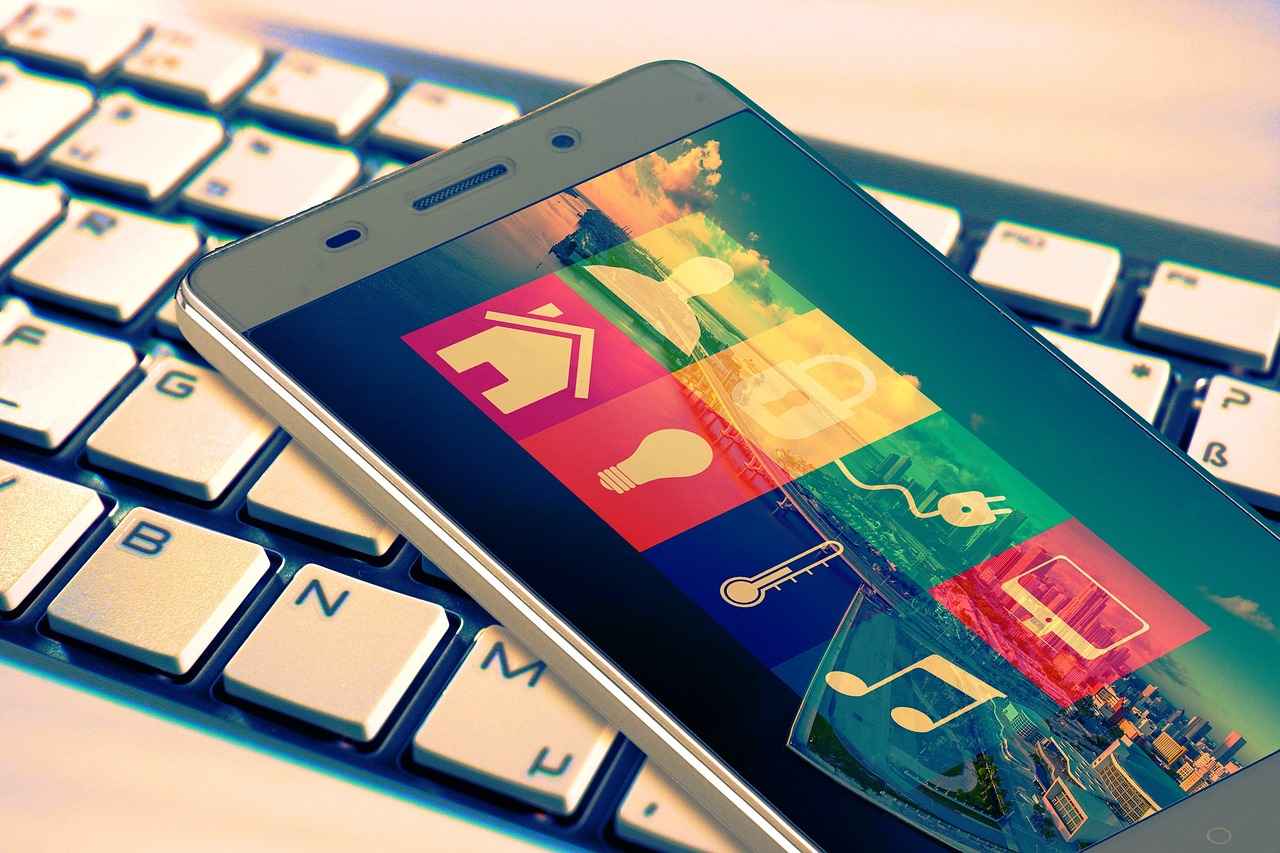
2. Smart Thermostats
Smart Thermostats are revolutionizing the way we manage our home environments. These innovative devices not only enhance comfort but also significantly improve energy efficiency throughout the year. By learning individual user preferences and adjusting temperatures accordingly, smart thermostats ensure that homes are always at the ideal temperature, whether it’s a chilly winter evening or a hot summer day.
One of the most significant advantages of smart thermostats is their ability to reduce energy bills over time. By optimizing heating and cooling schedules based on when the home is occupied, these devices prevent energy waste. For instance, a smart thermostat can lower the temperature when no one is home and gradually raise it before the family returns, ensuring comfort without unnecessary energy consumption.
| Feature | Description |
|---|---|
| Remote Control | Users can adjust settings from their smartphones, ensuring comfort on-the-go. |
| Energy Reports | Detailed insights into energy usage help identify savings opportunities. |
| Compatibility | Works with various HVAC systems for versatile applications. |
Another compelling feature of smart thermostats is their integration with other smart home devices. For example, they can work in tandem with smart lights and security systems to create a cohesive and efficient home automation experience. This interconnectedness not only enhances user convenience but also fosters a more sustainable lifestyle.
In conclusion, investing in a smart thermostat is a smart choice for any modern household. By learning user behaviors and optimizing energy use, these devices provide both comfort and substantial savings on energy bills, making them an essential addition to any home.
Benefits of Smart Thermostats
Smart thermostats have revolutionized the way we manage our home heating and cooling systems. They are not just a luxury; they are becoming a standard feature in modern homes due to their numerous benefits that promote energy efficiency, convenience, and comfort.
- Remote Control: One of the most significant advantages of smart thermostats is the ability to control your home’s temperature from anywhere using a smartphone app. Whether you are at work or on vacation, you can easily adjust your thermostat settings to ensure your home is comfortable upon your return.
- Energy Usage Reports: Smart thermostats provide detailed reports on your energy consumption. This feature allows homeowners to track their usage patterns and identify areas where they can save energy, ultimately leading to reduced utility bills.
- Learning Capabilities: Many smart thermostats learn your habits over time. They can automatically adjust the temperature based on your daily routines, ensuring optimal comfort while minimizing energy waste.
- Compatibility: These devices are designed to work with various HVAC systems, making them versatile and suitable for almost any home. They can often integrate with other smart home devices, enhancing your overall home automation experience.
- Geofencing: Some smart thermostats use geofencing technology to detect when you leave or approach your home. This feature allows the thermostat to adjust the temperature automatically, saving energy when you’re away and ensuring comfort when you return.
In conclusion, smart thermostats are an essential addition to any modern home. They not only enhance comfort and convenience but also contribute to significant energy savings, making them a wise investment for homeowners looking to improve their living environment.
Energy Savings
are a crucial aspect of modern living, especially as families strive to reduce their utility bills and minimize their environmental impact. One of the most effective ways to achieve these savings is through the use of smart thermostats.
By intelligently managing heating and cooling schedules, smart thermostats can significantly reduce energy consumption. These innovative devices learn the habits and preferences of the household, adjusting temperatures automatically to ensure comfort while avoiding unnecessary energy use. For instance, when the house is empty during the day, the thermostat can lower the temperature in winter or raise it in summer, ensuring that energy is not wasted.
Moreover, many smart thermostats provide users with detailed reports on energy usage. This data can help families identify patterns and make informed decisions about their energy consumption. For example, if a household notices that energy use spikes during certain times, they can adjust their habits or settings to optimize efficiency.
| Feature | Benefit |
|---|---|
| Learning Capabilities | Adapts to user preferences for optimal comfort and efficiency. |
| Remote Access | Control settings from anywhere via smartphone apps. |
| Energy Reports | Provides insights into energy usage for better management. |
In addition to these features, smart thermostats can integrate with other smart home devices, such as lights and security systems. This integration allows for a more cohesive home automation experience, where all devices work together to enhance energy efficiency. For example, when the thermostat is set to eco-mode, it can communicate with smart lights to dim or turn off when no one is home.
In conclusion, the adoption of smart thermostats not only leads to substantial but also promotes a sustainable lifestyle. By making informed choices about energy use, families can enjoy lower utility costs while contributing positively to the environment.
Integration with Other Devices
One of the most significant advantages of smart thermostats is their ability to seamlessly integrate with a variety of other smart home devices. This integration creates a unified and efficient home automation experience that enhances convenience, security, and energy management.
When smart thermostats are connected to devices such as smart lights and security systems, they can work together to optimize your home environment. For instance, when you leave home, the smart thermostat can communicate with your smart security system to activate security measures while adjusting the temperature to save energy. Similarly, smart lights can be programmed to turn off automatically when the thermostat detects that no one is home, further contributing to energy efficiency.
Moreover, the integration of smart thermostats with voice-activated assistants, such as Amazon Alexa or Google Assistant, allows homeowners to control their heating and cooling systems through simple voice commands. This feature not only adds convenience but also enhances accessibility for all family members.
Additionally, smart thermostats can provide valuable insights into energy usage patterns. By integrating with smart plugs or energy monitors, they can track how much energy is being consumed by different devices and suggest adjustments to reduce overall consumption. This capability encourages users to adopt more sustainable practices while also lowering utility bills.
In conclusion, the integration of smart thermostats with other smart home devices is a game-changer for modern households. By creating a cohesive system that communicates and works together, families can enjoy enhanced comfort, security, and energy efficiency, making their homes not only smarter but also more sustainable.
Popular Smart Thermostat Models
are essential for modern households seeking to enhance energy efficiency and comfort. With a range of options available, each model offers unique features tailored to meet diverse needs.
When selecting a smart thermostat, it’s crucial to consider various factors such as compatibility, user interface, and advanced functionalities. Below are some of the most popular models currently dominating the market:
| Model | Key Features | Price Range |
|---|---|---|
| Nest Learning Thermostat | Self-learning capabilities, remote control via app, energy history reports | $249 – $269 |
| Ecobee SmartThermostat | Includes room sensors, voice control, integrates with Alexa | $249 – $299 |
| Honeywell Home T9 | Smart room sensors, geofencing, customizable schedules | $199 – $249 |
| Emerson Sensi Touch | Touchscreen interface, easy installation, flexible scheduling | $149 – $179 |
Each of these models brings something unique to the table. For instance, the Nest Learning Thermostat is renowned for its ability to learn user habits and adjust temperatures automatically, which significantly boosts energy savings. Meanwhile, the Ecobee SmartThermostat stands out with its room sensors that help manage hot or cold spots in the house, ensuring consistent comfort throughout.
Moreover, many of these smart thermostats integrate seamlessly with other smart home devices, such as smart lights and security systems, providing a comprehensive home automation experience. By utilizing these innovative technologies, families can not only enjoy a more comfortable living environment but also contribute to energy conservation efforts.
In conclusion, investing in a smart thermostat is a wise choice for any modern household. With the right model, families can enjoy enhanced comfort, significant energy savings, and the convenience of remote management, making everyday life just a little bit easier.

3. Smart Security Cameras
In today’s world, ensuring the safety of your home is paramount. Smart security cameras have emerged as a vital tool for homeowners looking to enhance their property’s security while enjoying the convenience of modern technology. These devices not only provide a sense of peace of mind but also offer a range of features that cater to various security needs.
Remote Monitoring Capabilities
One of the standout features of smart security cameras is their ability to allow homeowners to monitor their property remotely. With the help of a smartphone or tablet, users can access live feeds, receive alerts, and review recorded footage, all from the comfort of their couch or while on the go.
Key Features of Smart Security Cameras
- Motion Detection: Alerts homeowners to any unusual movement, ensuring timely responses to potential threats.
- Night Vision: Enables clear visibility in low-light conditions, providing round-the-clock surveillance.
- Two-Way Audio: Allows communication through the camera, making it easy to interact with visitors or deter intruders.
- Cloud Storage Options: Many cameras offer cloud storage for recorded footage, ensuring that important evidence is securely saved.
Types of Smart Security Cameras
There are various types of smart security cameras available, including:
- Indoor Cameras: Ideal for monitoring the interior of your home.
- Outdoor Cameras: Designed to withstand the elements while providing a clear view of the exterior.
- Video Doorbells: Combine a doorbell and camera, allowing you to see who is at your door and communicate with them.
Conclusion
Investing in smart security cameras is a proactive measure for any homeowner. With features like motion detection, night vision, and two-way audio, these devices not only enhance security but also provide invaluable peace of mind. As technology continues to evolve, integrating smart security solutions into your home will only become more essential.
Types of Smart Security Cameras
In today’s world, ensuring the safety and security of your home has become increasingly important. One of the most effective ways to achieve this is through the use of smart security cameras. These devices not only provide real-time monitoring but also offer various features that cater to different security needs. Below, we delve into the available in the market, each designed for specific applications and environments.
- Indoor Cameras: Ideal for monitoring the interior of your home, these cameras are perfect for keeping an eye on children, pets, or any suspicious activity. They often come equipped with features like two-way audio and night vision.
- Outdoor Cameras: Built to withstand various weather conditions, outdoor cameras are essential for monitoring the exterior of your property. They typically include motion detection, high-definition video, and night vision capabilities to ensure comprehensive surveillance.
- Doorbell Cameras: These innovative devices combine a traditional doorbell with a camera, allowing homeowners to see and communicate with visitors remotely. They enhance security by providing a clear view of who is at the door, even when you are not home.
- PTZ Cameras: Pan-Tilt-Zoom (PTZ) cameras offer advanced tracking capabilities, allowing users to remotely control the camera’s direction and zoom in on specific areas. This is particularly useful for large properties or public spaces.
- Wireless Cameras: These cameras are easy to install and can be placed anywhere without the hassle of wires. They connect to your home Wi-Fi network, allowing for remote access and monitoring via smartphone apps.
When selecting a smart security camera, consider factors such as video quality, storage options, and integration with existing smart home systems. Each type of camera serves a unique purpose, contributing to a comprehensive security strategy for your home.
In conclusion, understanding the different types of smart security cameras available can help homeowners make informed decisions to enhance their security. By choosing the right camera for your needs, you can ensure peace of mind and protect your loved ones and property.
Key Features to Look For
When it comes to enhancing home security, selecting the right smart security camera is crucial for safeguarding your property. With a plethora of options available, it’s essential to focus on specific key features that will ensure optimal performance and reliability.
- Video Quality: Look for cameras that offer high-definition video resolution, such as 1080p or 4K, to ensure clear and detailed footage. Advanced features like HDR (High Dynamic Range) can also improve image quality in varying lighting conditions.
- Storage Options: Consider whether the camera offers local storage via SD cards or cloud storage solutions. Cloud storage often provides additional benefits like remote access and automatic backups, but be mindful of any associated subscription fees.
- Integration with Smart Home Systems: A smart security camera should seamlessly integrate with your existing smart home devices, such as smart speakers and home automation systems. This integration allows for enhanced functionality, like receiving alerts through your smart speaker or viewing camera feeds on your smart display.
- Motion Detection: Advanced motion detection features, such as customizable activity zones and person detection, can help reduce false alarms. Look for cameras that send real-time notifications to your smartphone when movement is detected.
- Night Vision: Ensure the camera has reliable night vision capabilities, either through infrared technology or color night vision, allowing for effective monitoring even in low-light conditions.
- Two-Way Audio: This feature enables communication through the camera, allowing you to speak to visitors or intruders directly. It adds an extra layer of convenience and security.
By focusing on these key features, you can select a smart security camera that not only meets your security needs but also integrates smoothly into your smart home ecosystem, providing peace of mind and enhanced safety.
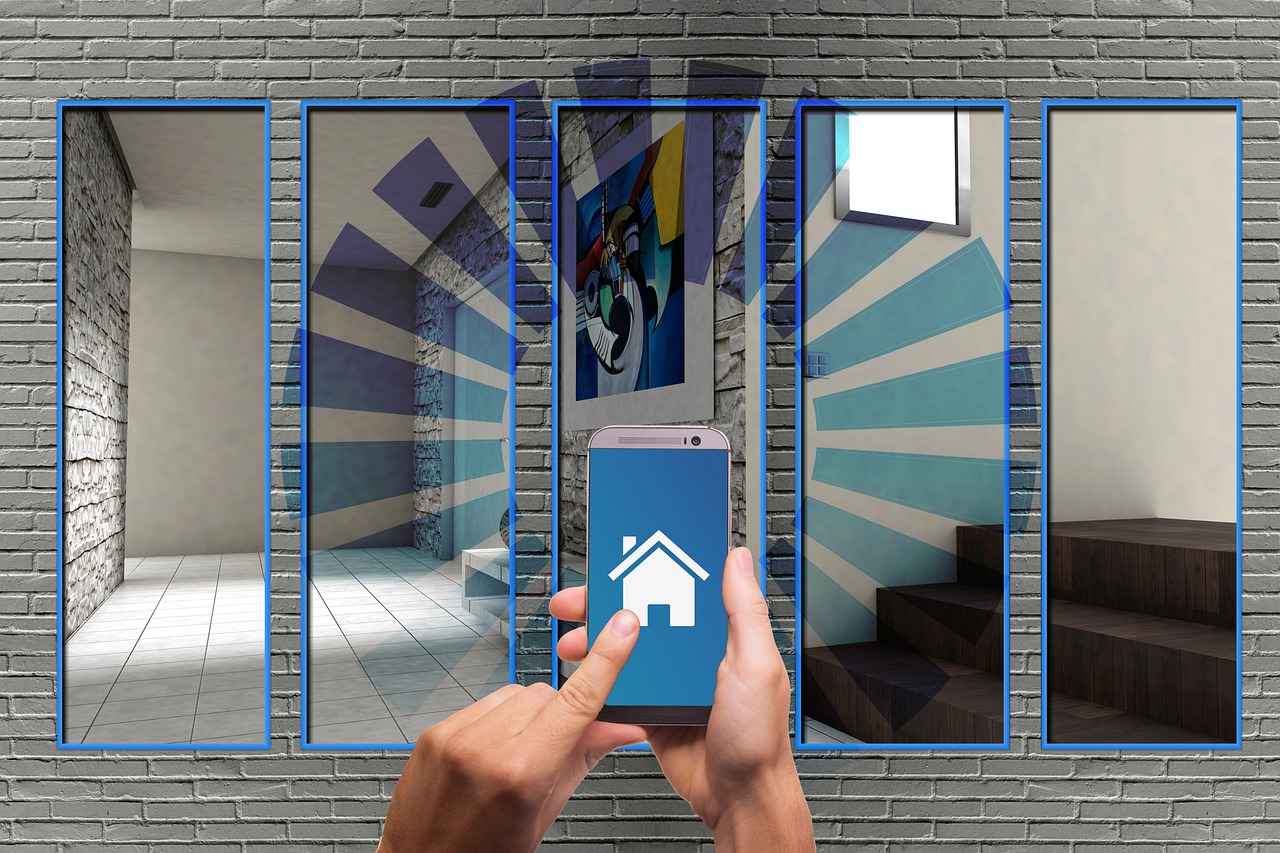
4. Smart Door Locks
Smart door locks are revolutionizing home security by providing keyless entry, which enhances convenience and safety for modern families. These innovative devices not only allow homeowners to lock and unlock their doors remotely but also offer the ability to grant temporary access to guests, all managed through an intuitive smartphone app.
Key Features of Smart Door Locks
- Keyless Entry: Eliminate the need for physical keys, reducing the risk of losing them or having them stolen.
- Remote Access: Lock or unlock your door from anywhere, ensuring peace of mind when you’re away from home.
- Temporary Access: Easily provide access to friends, family, or service personnel without needing to be physically present.
- Activity Monitoring: Receive notifications and monitor who enters or exits your home, enhancing security awareness.
Advantages of Smart Door Locks
One of the primary advantages of smart door locks is their integration with home security systems. This feature allows for comprehensive monitoring of entry points, ensuring that homeowners have complete control over their home security. Additionally, many smart locks come equipped with two-factor authentication for added security, requiring both a smartphone and a unique code for access.
Popular Smart Door Lock Models
Several leading brands offer smart door locks, each with unique features tailored to different household needs. Models like the August Smart Lock and Schlage Encode are known for their reliability and user-friendly interfaces.
Conclusion
In conclusion, smart door locks are an essential addition to any modern home. They not only enhance security but also provide unparalleled convenience for busy families. By embracing this technology, homeowners can enjoy peace of mind knowing their homes are protected while having the flexibility to manage access effortlessly.
Advantages of Keyless Entry
In today’s fast-paced world, keyless entry systems have emerged as a revolutionary solution for enhancing home security and convenience. These systems eliminate the need for traditional physical keys, which can be easily lost or stolen, providing a safer and more efficient alternative for busy families.
- Enhanced Security: Keyless entry systems often come equipped with advanced security features, such as encryption and biometric authentication, making unauthorized access significantly more difficult.
- Convenience: Forgetting or misplacing keys is a common issue for many families. Keyless entry allows homeowners to unlock their doors using codes, smartphones, or even smartwatches, ensuring quick and easy access.
- Temporary Access: These systems allow homeowners to grant temporary access to guests, service personnel, or family members without needing to provide a physical key, enhancing convenience and security.
- Remote Access: Many keyless entry systems can be controlled remotely via smartphone apps, enabling homeowners to lock or unlock their doors from anywhere, providing peace of mind when away from home.
- Activity Monitoring: Certain models offer features that track entry and exit times, allowing families to monitor who is coming and going, which can be particularly useful for households with teenagers or caregivers.
In addition to these benefits, keyless entry systems can integrate seamlessly with other smart home devices, creating a cohesive security ecosystem that enhances overall safety and convenience. Families can manage their home security from a single app, making it easier to monitor their property and control access points.
In conclusion, the advantages of keyless entry systems go beyond mere convenience. By enhancing security, providing flexibility, and integrating with other smart technologies, these systems represent a significant advancement in home security for modern families.
Integration with Security Systems
In today’s world, where home security is a top priority for many families, smart door locks play a crucial role. These advanced locking mechanisms not only provide keyless entry but also integrate seamlessly with comprehensive home security systems. This integration allows homeowners to monitor and control entry points effectively, ensuring a higher level of protection.
Comprehensive Monitoring
When smart door locks are connected to a home security system, they enable real-time monitoring of all entry points. Homeowners can receive alerts on their smartphones whenever someone accesses the door, whether it’s a family member returning home or a visitor. This feature is particularly beneficial for families with children, as parents can ensure that their kids arrive home safely.
Remote Access Control
Another significant advantage is the ability to control access remotely. Homeowners can lock or unlock doors from anywhere using their smartphones. This feature is especially useful for granting temporary access to service personnel or guests without requiring physical keys. The ability to manage access points remotely enhances convenience and security, making it easier to maintain control over who enters the home.
| Feature | Benefit |
|---|---|
| Real-Time Alerts | Immediate notifications for any door activity |
| Remote Locking/Unlocking | Convenient access management from anywhere |
| Integration with Security Cameras | Enhanced monitoring with video footage of entry points |
Enhanced Security Measures
Smart door locks can also incorporate additional security features, such as two-factor authentication and biometric access. By integrating these locks with existing security systems, homeowners can create a multi-layered defense strategy, making unauthorized access significantly more challenging.
In conclusion, the integration of smart door locks with home security systems not only enhances convenience but also provides a robust solution for securing entry points. This synergy not only protects families but also offers peace of mind in an increasingly connected world.
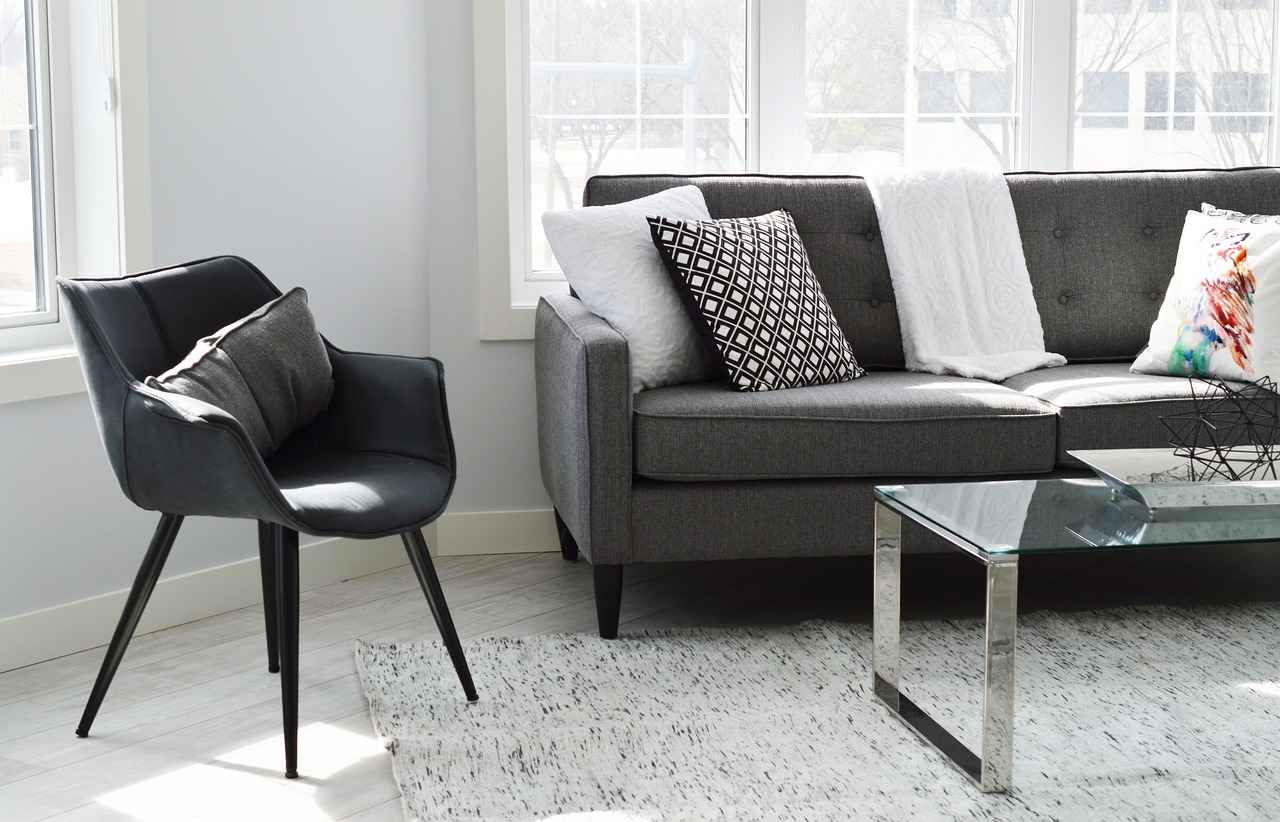
5. Smart Lighting Solutions
In today’s fast-paced world, smart lighting solutions have become an essential part of modern homes. These innovative technologies allow homeowners to control their lighting with ease, providing not only convenience but also enhancing the overall ambiance of living spaces.
Remote Control and Automation
With smart lighting, users can manage their lights from anywhere using a smartphone app. This feature is particularly useful for those who want to ensure their home is well-lit when they arrive or to turn off lights left on accidentally. Additionally, homeowners can set schedules to automate lighting, ensuring that lights turn on or off at specific times, which can help improve energy efficiency.
Adjustable Brightness and Color
One of the standout features of smart lighting is the ability to adjust brightness and color. Whether you want a warm glow for a cozy evening or bright white light for reading, smart bulbs can accommodate your needs. Many systems also offer a range of colors, allowing users to create various moods for different occasions, from vibrant parties to relaxing evenings.
Enhanced Security
Smart lighting can also enhance home security. By scheduling lights to turn on and off at random intervals, homeowners can create the illusion that someone is home, deterring potential intruders. Some systems even integrate with security cameras, providing a comprehensive safety solution.
Popular Smart Lighting Brands
- Philips Hue
- Wyze Bulbs
- LIFX
- TP-Link Kasa Smart
In conclusion, smart lighting solutions offer numerous benefits, including remote control, energy efficiency, and enhanced security. As technology continues to advance, integrating smart lighting into homes will only become more intuitive and beneficial for families looking to create a connected and efficient living environment.
Benefits of Smart Lighting
In today’s fast-paced world, smart lighting has emerged as a revolutionary technology that not only enhances the aesthetic appeal of homes but also provides numerous practical benefits. By integrating smart lighting solutions into your home, you can experience a new level of convenience, energy efficiency, and security.
- Energy Efficiency: One of the most significant advantages of smart lighting is its ability to optimize energy consumption. Smart bulbs can be programmed to turn off automatically when not in use or dimmed to reduce energy usage. This feature can lead to a noticeable decrease in your electricity bills.
- Improved Home Security: Smart lighting can enhance your home’s security by simulating occupancy. You can set your lights to turn on and off at specific times, making it appear as though someone is home, which can deter potential intruders.
- Convenience and Control: With smart lighting, you can control your lights from anywhere using a smartphone app or voice commands. Whether you want to adjust the brightness, change colors, or create schedules, smart lighting offers unparalleled convenience.
- Customization: Smart lighting systems allow users to customize their lighting preferences. You can create different scenes for various activities, such as reading, watching movies, or entertaining guests, enhancing the overall ambiance of your home.
- Integration with Other Smart Devices: Smart lighting can seamlessly integrate with other smart home devices, such as security systems and smart speakers, creating a cohesive and automated home environment. This integration allows for enhanced functionality and ease of use.
In conclusion, the incorporation of smart lighting into your home not only provides aesthetic benefits but also promotes energy efficiency, enhances security, and adds convenience to your daily life. As technology continues to advance, smart lighting remains a valuable addition to any modern home.
Popular Smart Lighting Brands
In the ever-evolving world of smart home technology, smart lighting has emerged as a key component that enhances both the functionality and aesthetics of living spaces. Several brands provide innovative smart lighting solutions, each offering unique features that cater to various user needs and preferences. This article delves into some of the most popular smart lighting brands, highlighting their standout features and compatibility with different smart home ecosystems.
- Philips Hue
- Known for its extensive range of smart bulbs, light strips, and fixtures.
- Compatible with major smart home systems like Amazon Alexa, Google Assistant, and Apple HomeKit.
- Offers customizable settings, including color changes and scheduling options.
- LIFX
- Features vibrant colors and high brightness levels without requiring a hub.
- Easy integration with various platforms, enabling voice control and automation.
- Provides unique features such as flicker-free dimming and customizable scenes.
- Wyze
- Offers affordable smart lighting options with impressive features.
- Compatible with Alexa and Google Assistant for voice control.
- Includes features like scheduling, timers, and adjustable brightness.
- Sengled
- Provides a variety of smart bulbs, including those with built-in speakers.
- Works seamlessly with major smart home systems.
- Focuses on energy efficiency and easy installation.
- TP-Link Kasa
- Known for its user-friendly app and straightforward setup process.
- Offers a wide range of smart lighting products, including bulbs and smart plugs.
- Compatible with Alexa and Google Assistant for voice-activated control.
When selecting smart lighting solutions, it’s essential to consider factors such as compatibility with existing smart home devices, desired features, and budget. By exploring the options provided by these popular brands, families can find the perfect smart lighting solutions to meet their specific needs, enhancing both convenience and energy efficiency in their homes.
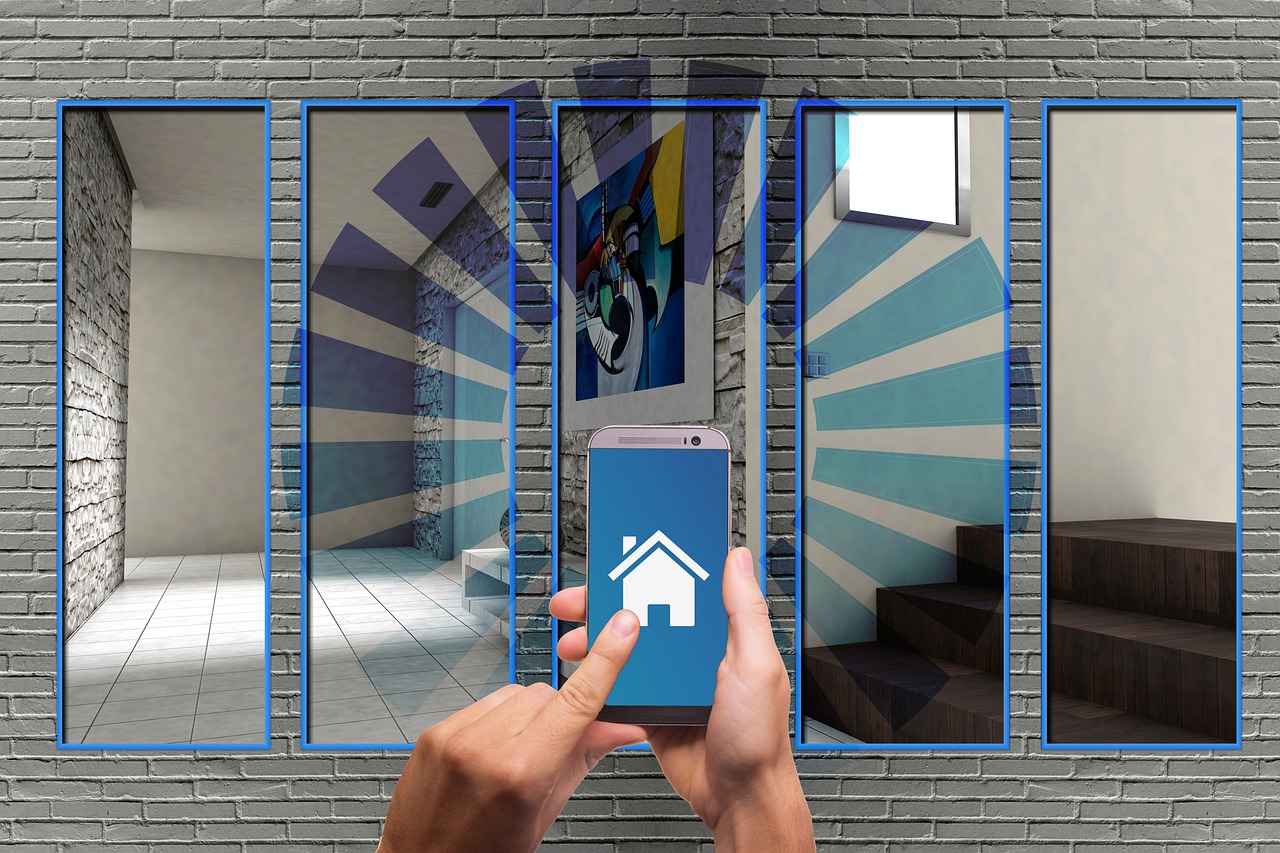
6. Smart Plugs
Smart plugs are revolutionary devices that enable users to transform ordinary appliances into smart devices. By connecting to a standard outlet, these plugs allow homeowners to control their appliances remotely, set schedules, and monitor energy usage, significantly enhancing convenience and efficiency in everyday life.
How Smart Plugs Work
Smart plugs connect to your home Wi-Fi network, allowing you to control them through a smartphone app or voice commands via smart assistants like Amazon Alexa or Google Assistant. This means you can turn devices on or off from anywhere, whether you’re at home or away.
Key Features of Smart Plugs
- Remote Control: Manage your devices from your smartphone, even when you’re not at home.
- Scheduling: Set specific times for devices to turn on or off, helping to automate your daily routines.
- Energy Monitoring: Track energy usage to help identify which devices consume the most power, allowing for better energy management.
Benefits of Using Smart Plugs
Integrating smart plugs into your home can lead to numerous benefits:
- Convenience: Easily control multiple devices from one app.
- Energy Savings: By monitoring usage, you can reduce energy waste and lower utility bills.
- Enhanced Safety: Schedule lights to turn on when you’re away, making it appear like someone is home.
Popular Smart Plug Brands
Several brands offer reliable smart plugs, including:
- TP-Link Kasa Smart Plug
- Amazon Smart Plug
- Wemo Mini Smart Plug
In conclusion, smart plugs are a fantastic addition to any smart home setup. They offer an easy way to upgrade your appliances, providing both convenience and energy efficiency. By investing in smart plugs, families can streamline their daily routines and contribute to a more sustainable lifestyle.
How to Use Smart Plugs
Smart plugs are a fantastic addition to any modern home, offering a seamless way to enhance convenience and efficiency. They allow you to turn ordinary devices into smart ones, enabling remote control and automation. Here’s how you can effectively utilize smart plugs in your daily life:
- Control Devices Remotely: With smart plugs, you can control your devices from anywhere using your smartphone. Whether you’re at work or on vacation, simply use the corresponding app to turn devices on or off.
- Set Schedules: Automate your routine by scheduling when your devices should turn on or off. For example, set your coffee maker to start brewing at 7 AM every morning, ensuring you wake up to fresh coffee.
- Monitor Energy Usage: Many smart plugs come with energy monitoring features that allow you to track how much energy your devices consume. This information can help you identify energy hogs and make more informed decisions to save on your electricity bill.
- Voice Control: If you have a smart home assistant, you can integrate your smart plugs for voice command capabilities. Simply say, “Turn on the lamp,” and enjoy hands-free control.
- Group Control: Create groups for your smart plugs in the app, allowing you to control multiple devices at once. For example, you can turn off all lights in your home with a single command.
By leveraging these features, smart plugs can significantly streamline your daily routines, providing both flexibility and efficiency. They are perfect for families looking to enhance their home automation experience.
Conclusion: Smart plugs are an essential component of a smart home, transforming how you interact with everyday devices. By utilizing their capabilities, you can create a more connected and efficient living environment.
Energy Monitoring Capabilities
In today’s world, where energy conservation is becoming increasingly crucial, smart plugs have emerged as a vital tool for households aiming to enhance their energy efficiency. These devices not only offer the convenience of controlling appliances remotely but also provide energy monitoring features that empower users to track their energy consumption.
With the ability to monitor energy usage, smart plugs enable homeowners to identify which devices consume the most power. This insight can lead to informed decisions about usage patterns, helping families reduce their energy bills significantly. For instance, if a user discovers that their old refrigerator is a major energy hog, they may consider replacing it with a more energy-efficient model.
Many smart plugs come equipped with user-friendly apps that display real-time energy consumption data. This data can be presented in various formats, including:
- Daily usage reports
- Weekly summaries
- Monthly trends
By analyzing these reports, users can pinpoint times of high energy usage and adjust their habits accordingly. For example, they might choose to unplug devices when not in use or schedule them to operate during off-peak hours, when electricity rates are lower.
Moreover, many smart plugs offer features such as energy-saving modes and overload protection, which can automatically shut off devices that exceed a certain power threshold. This not only prevents waste but also enhances safety by reducing the risk of electrical fires.
In conclusion, the energy monitoring capabilities of smart plugs contribute significantly to fostering a more sustainable lifestyle. By empowering users with the information they need to make smarter choices, these devices play a crucial role in reducing overall energy consumption and promoting environmental responsibility.

7. Smart Home Hubs
Smart home hubs play a critical role in modern households by acting as the central control system for all connected devices. These hubs facilitate seamless communication and automation between various smart home products, creating a cohesive user experience that enhances daily living.
By consolidating control into a single platform, smart home hubs allow users to manage multiple devices effortlessly. Whether it’s adjusting the thermostat, turning on lights, or monitoring security cameras, a smart home hub simplifies these tasks through a unified interface.
- Centralized Control: Users can manage all their smart devices from one app, reducing complexity.
- Automation: Smart home hubs enable automation routines, such as setting lights to turn on at sunset or adjusting the thermostat when leaving home.
- Compatibility: Many hubs support a wide range of smart devices, ensuring that users can integrate products from different manufacturers.
- Voice Control: Most smart home hubs are compatible with voice assistants like Amazon Alexa or Google Assistant, allowing for hands-free operation.
When selecting a smart home hub, consider the following factors:
- Device Compatibility: Ensure the hub supports the devices you already own or plan to purchase.
- User Interface: Look for a hub with an intuitive app or web interface that makes managing devices easy.
- Features: Some hubs offer advanced features like geofencing, which can trigger actions based on your location.
Several smart home hubs are widely recognized for their functionality and user satisfaction:
- Amazon Echo Plus: Integrates with a variety of smart devices and offers built-in voice control.
- Google Nest Hub: Features a touchscreen interface and integrates seamlessly with Google services.
- Samsung SmartThings: Known for its extensive compatibility with a range of smart devices.
In conclusion, smart home hubs are essential for maximizing the potential of smart home technology. By providing a centralized control system, they enhance convenience, improve automation, and create a more integrated living environment for families.
Choosing the Right Hub
is a critical step in creating a smart home that meets your needs. With numerous options available, homeowners must consider various factors to ensure compatibility and functionality. The right hub acts as the brain of your smart home, enabling seamless communication between devices and simplifying control.
When selecting a smart home hub, it is essential to evaluate:
- Compatibility: Ensure the hub supports all your existing smart devices. Popular ecosystems include Amazon Alexa, Google Assistant, and Apple HomeKit. Each has its unique compatibility requirements.
- Ease of Use: A user-friendly interface can significantly enhance your experience. Look for hubs that offer intuitive apps and straightforward setup processes.
- Features: Identify the specific features you desire, such as voice control, automation capabilities, or integration with third-party services. Some hubs offer advanced features like geofencing and scheduling, which can enhance convenience.
Moreover, consider the following aspects:
| Hub Model | Compatibility | Key Features |
|---|---|---|
| Amazon Echo Plus | Alexa-compatible devices | Built-in Zigbee hub, voice control |
| Google Nest Hub | Google Assistant devices | Voice control, touchscreen display |
| Samsung SmartThings | Multiple ecosystems | Extensive automation options, wide device compatibility |
In conclusion, selecting the right smart home hub is vital for ensuring a cohesive and functional smart home ecosystem. By focusing on compatibility, ease of use, and desired features, homeowners can enhance their living environment, making it more convenient and efficient.
Benefits of Using a Hub
A smart home hub is a vital component in the ecosystem of connected devices within a modern household. It acts as the central point of communication, ensuring all smart devices work together harmoniously. Below are some significant benefits of utilizing a smart home hub:
- Centralized Control: A smart home hub allows users to manage all their devices from a single interface, whether through a mobile app or a voice assistant. This eliminates the need to switch between multiple apps for different devices.
- Automation Routines: With a hub, users can create complex automation routines that trigger multiple devices simultaneously. For instance, you can set your lights to turn on and your thermostat to adjust when you arrive home.
- Enhanced Compatibility: Many smart home hubs support a wide range of devices from various manufacturers, allowing for greater flexibility and compatibility. This means you can mix and match devices to suit your needs.
- Improved Security: Hubs often come with advanced security features, such as encrypted communication and two-factor authentication. This helps protect your smart home from unauthorized access.
- Energy Efficiency: By coordinating the operation of devices, smart home hubs can optimize energy usage. For example, they can ensure that devices are turned off when not in use, contributing to lower utility bills.
- Scalability: As your smart home evolves, a hub allows for easy integration of new devices. This scalability ensures that your smart home can grow with your needs.
In conclusion, a smart home hub significantly enhances the overall smart home experience by simplifying device management, enabling automation, and ensuring compatibility across various devices. Investing in a quality hub can lead to a more efficient, secure, and convenient living environment.
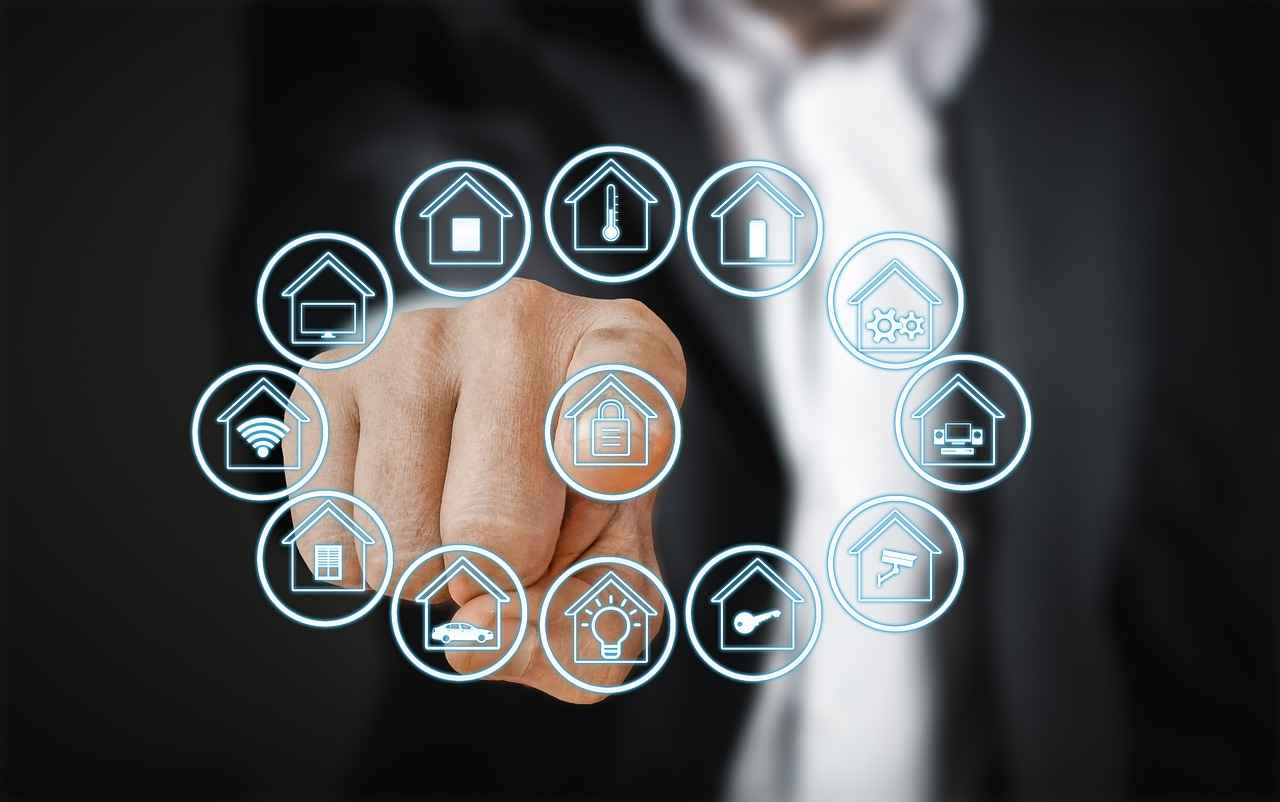
8. Smart Appliances
In today’s fast-paced world, smart appliances have emerged as essential components of modern households. These devices, including refrigerators, ovens, and washing machines, are equipped with advanced features and connectivity options that significantly enhance user experience.
Smart appliances allow homeowners to monitor and control their devices remotely, providing unparalleled convenience. Imagine being able to preheat your oven while still at work or receiving notifications on your smartphone when your laundry is done. This level of control not only improves efficiency but also saves time, making daily routines much smoother.
Key Features of Smart Appliances
- Remote Monitoring: Users can check the status of their appliances from anywhere, ensuring peace of mind.
- Energy Efficiency: Many smart appliances are designed to optimize energy usage, contributing to lower utility bills.
- Integration with Smart Home Systems: These devices can seamlessly connect with other smart home technologies, allowing for automation and enhanced functionality.
Examples of Smart Appliances
- Smart Refrigerators: Equipped with touch screens, these fridges can display recipes, create shopping lists, and even let you see inside without opening the door.
- Smart Ovens: These ovens can be preheated remotely and offer cooking assistance through integrated apps, making meal preparation easier.
- Smart Washing Machines: Users can control wash cycles and receive alerts on their phones when laundry is complete, adding convenience to household chores.
Conclusion
Overall, smart appliances represent a significant advancement in home technology. By integrating these devices into your home, you can enjoy improved efficiency, convenience, and energy savings. As technology continues to evolve, the potential for smart appliances to enhance daily living will only grow.
Examples of Smart Appliances
In today’s fast-paced world, smart appliances have become essential tools that enhance the efficiency and convenience of daily household tasks. These innovative devices not only streamline chores but also integrate seamlessly into our connected homes. Below are some popular examples of smart appliances that are transforming the way we live:
- Smart Refrigerators: Equipped with touch screens and internet connectivity, smart refrigerators allow users to monitor food inventory, create shopping lists, and even view recipes. Some models feature internal cameras that let you see contents from your smartphone, ensuring you never forget an item while shopping.
- Smart Ovens: These ovens can be preheated remotely via smartphone apps, enabling users to start cooking as they leave work. Many smart ovens also offer guided cooking features that provide step-by-step instructions for various recipes, making meal preparation easier than ever.
- Smart Washing Machines: With the ability to control wash cycles from your smartphone, smart washing machines allow you to start or pause laundry at your convenience. Some models even send notifications when a cycle is complete, ensuring you never leave clothes sitting in the washer for too long.
- Smart Dishwashers: These appliances can be scheduled to run during off-peak hours to save on energy costs. Many smart dishwashers also feature sensors that adjust wash cycles based on load size and soil level, optimizing water and energy use.
- Smart Coffee Makers: Imagine waking up to the aroma of freshly brewed coffee! Smart coffee makers can be programmed or controlled via an app, allowing you to set brew times and customize coffee strength—all from the comfort of your bed.
These smart appliances not only enhance convenience but also promote energy efficiency and sustainability. By integrating these devices into your home, you can significantly improve your daily routines while contributing to a smarter and more connected living environment.
Energy Efficiency in Smart Appliances
In today’s world, where energy conservation is paramount, smart appliances play a crucial role in promoting sustainability and reducing household energy consumption. These innovative devices are designed not only to enhance convenience but also to optimize energy usage effectively.
Smart appliances, including refrigerators, ovens, and washing machines, are equipped with advanced technologies that allow them to learn user habits and adjust their operations accordingly. For instance, a smart thermostat can monitor temperature preferences and automatically adjust heating or cooling settings to minimize energy waste. This adaptability leads to significant cost savings on utility bills while also contributing to a more eco-friendly lifestyle.
Key Features of Energy-Efficient Smart Appliances:
- Remote Monitoring: Users can monitor energy consumption in real-time through smartphone apps, allowing them to make informed decisions about their usage.
- Adaptive Learning: Many smart appliances can learn from user behavior, adjusting their settings to optimize performance and energy efficiency.
- Energy Reports: Detailed reports on energy usage help families identify patterns and areas where they can improve efficiency.
- Integration with Renewable Energy Sources: Some smart appliances can be synchronized with solar panels or other renewable energy systems, maximizing energy savings.
Moreover, the integration of smart appliances with home automation systems allows for enhanced control and coordination. For example, a smart washing machine can be programmed to run during off-peak energy hours, further reducing energy costs.
As families increasingly seek to reduce their carbon footprint, investing in smart appliances is a wise choice. By optimizing energy consumption, these devices not only help in saving money but also contribute to a more sustainable household. In conclusion, adopting smart appliances is a significant step towards creating an energy-efficient home, benefiting both the environment and your wallet.
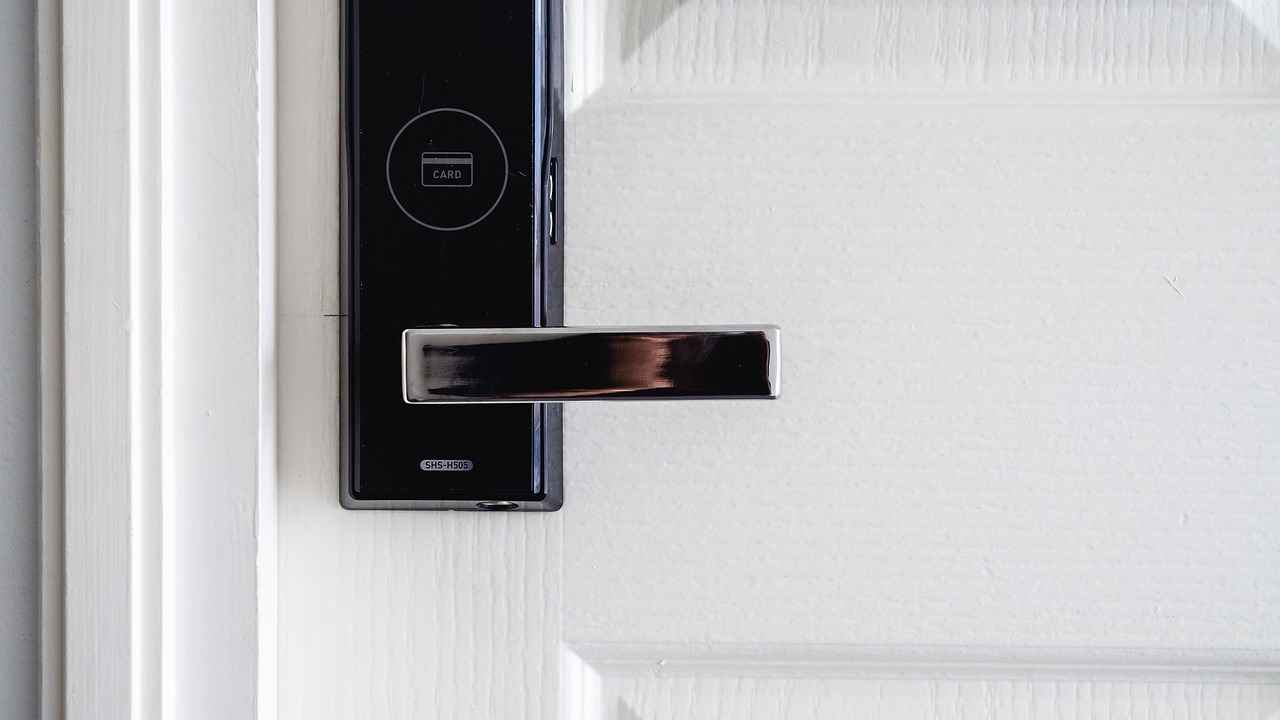
9. Smart TVs and Entertainment Systems
Smart TVs and entertainment systems are revolutionizing the way families enjoy their favorite shows, movies, and games. With the rise of streaming services and smart technology, these devices have become essential components of modern households. In this section, we will explore the various features and benefits of smart TVs and entertainment systems, as well as how they integrate with other smart home devices to create a seamless entertainment experience.
- Streaming Services: Access to popular platforms like Netflix, Hulu, and Disney+ directly from your TV.
- Voice Control: Integration with voice assistants like Amazon Alexa and Google Assistant for hands-free operation.
- High-Definition Displays: Options for 4K and even 8K resolution for stunning visual quality.
- Smart Apps: A variety of applications that enhance functionality, including games, social media, and news.
Smart TVs not only provide access to a wide array of content but also enhance the overall family entertainment experience. Families can enjoy movie nights with streaming services that cater to all ages, ensuring everyone can find something they love. Additionally, the ability to control the TV with voice commands simplifies the viewing process, allowing for a more interactive experience.
One of the most significant advantages of smart TVs is their ability to integrate with other smart home devices. For instance, you can use your smart speaker to control the TV, adjust the lighting for a movie night, or even check the weather while watching. This level of integration creates a cohesive smart home environment that enhances convenience and enjoyment.
When selecting a smart TV, consider factors such as screen size, resolution, and compatibility with other devices. Look for models that support the latest technologies, such as HDR and Dolby Atmos, to ensure a premium viewing experience. Additionally, check for regular software updates to keep your device secure and functional.
In conclusion, smart TVs and entertainment systems play a crucial role in modern family life, offering a combination of convenience, connectivity, and entertainment. By integrating these devices with other smart home technology, families can create an unparalleled entertainment experience that is both enjoyable and efficient.
Features to Look For in Smart TVs
When it comes to choosing a smart TV, there are several key features that can significantly enhance your viewing experience. With the rapid advancement in technology, it is essential to stay informed about the options available to ensure you select the perfect device for your needs.
1. Screen Resolution
One of the most important aspects to consider is the screen resolution. Modern smart TVs offer various resolutions, including Full HD (1080p), 4K Ultra HD (2160p), and even 8K. Higher resolutions provide sharper images and more detail, making them ideal for an immersive viewing experience, especially for movies and gaming.
2. Compatibility with Voice Assistants
Another feature to look for is the compatibility with voice assistants such as Amazon Alexa, Google Assistant, or Apple Siri. This functionality allows you to control your TV and other smart devices using voice commands, enhancing convenience and accessibility.
3. Streaming Services Availability
Make sure to check the available streaming services on the smart TV. Popular platforms like Netflix, Hulu, Amazon Prime Video, and Disney+ should be easily accessible. A wide range of apps ensures that you have plenty of content to choose from, catering to diverse viewing preferences.
4. Smart Features and Connectivity
Look for additional smart features such as screen mirroring, Bluetooth connectivity, and Wi-Fi capabilities. These features enhance the versatility of your TV, allowing you to connect with other devices effortlessly.
5. Picture Quality Enhancements
Many smart TVs come equipped with technologies like HDR (High Dynamic Range) and local dimming, which improve picture quality by enhancing contrast and color accuracy. These enhancements can make a significant difference in your viewing experience.
Conclusion
By considering these essential features when selecting a smart TV, you can ensure that you invest in a device that meets your entertainment needs and provides an optimal viewing experience for you and your family.
Integration with Other Devices
In today’s rapidly evolving technological landscape, smart TVs have become a cornerstone of home entertainment. They not only provide access to a plethora of streaming services but also integrate seamlessly with other smart devices, enhancing the overall user experience. This integration allows homeowners to control their entertainment systems with ease and convenience.
One of the most significant advantages of a smart TV is its ability to connect with various smart home devices. For instance, users can control their TV using voice commands through smart speakers like Amazon Echo or Google Home. This functionality not only simplifies the user experience but also adds a layer of convenience, allowing families to enjoy their favorite shows without needing to search for remotes.
Moreover, smart TVs can be integrated into home automation systems, enabling users to create customized entertainment experiences. For example, families can set their smart lights to dim automatically when a movie starts or adjust the temperature with a smart thermostat for optimal comfort. This level of automation creates an immersive environment, making movie nights or game days more enjoyable.
Additionally, many smart TVs support popular streaming platforms and applications, allowing seamless access to content. With the ability to cast from smartphones or tablets, users can easily share content on the big screen, enhancing social interactions during gatherings.
Furthermore, the integration of smart TVs with security systems is a notable feature. Homeowners can receive alerts on their TV screens regarding security breaches or monitor live feeds from smart security cameras, providing peace of mind while enjoying their entertainment.
In conclusion, the integration of smart TVs with other smart devices not only enhances the entertainment experience but also promotes a more connected and automated home environment. As technology continues to advance, the possibilities for creating a truly immersive and convenient living space are endless.

10. Smart Blinds and Shades
Smart blinds and shades represent a significant advancement in home automation, providing homeowners with the ability to control natural light and privacy effortlessly. These innovative window treatments can be adjusted remotely via smartphone applications or set on schedules, ensuring optimal convenience and energy efficiency in any living space.
Benefits of Smart Window Treatments
- Energy Efficiency: Smart blinds help regulate indoor temperatures by blocking excessive sunlight during hot days and retaining warmth during colder months. This regulation can lead to reduced reliance on heating and cooling systems, ultimately resulting in lower energy bills.
- Enhanced Privacy: Homeowners can easily adjust their blinds to maintain privacy without sacrificing natural light. This feature is particularly beneficial for urban dwellers or homes situated close to neighbors.
- Convenience: With the ability to control blinds remotely, families can adjust their window treatments from anywhere in the house or even while away, adding a layer of convenience and security.
Types of Smart Blinds
There are several types of smart blinds and shades available, each offering unique styles and functionalities:
- Roller Shades: These are sleek and modern, perfect for minimalistic decor.
- Venetian Blinds: Ideal for traditional aesthetics, offering adjustable slats for light control.
- Cellular Shades: Known for their energy-saving properties, these shades trap air in their cells, providing insulation.
Conclusion
Incorporating smart blinds and shades into your home not only enhances your living environment with automated convenience but also contributes to energy savings and improved privacy. As technology continues to evolve, these window treatments are becoming an essential part of modern smart homes, offering a blend of functionality and style.
Benefits of Smart Window Treatments
Smart window treatments, such as smart blinds and shades, are becoming increasingly popular among homeowners looking to enhance their living spaces. These innovative solutions not only add a touch of modernity to any home but also offer a range of benefits that contribute to energy efficiency and overall comfort.
Energy Efficiency
One of the most significant advantages of smart blinds is their ability to regulate indoor temperatures. By automatically adjusting according to the time of day and the amount of sunlight, smart blinds can help maintain a comfortable environment without over-relying on heating and cooling systems. This can lead to substantial reductions in energy consumption, ultimately contributing to lower energy bills.
Convenience and Control
Smart blinds can be controlled remotely via smartphone apps, allowing homeowners to adjust their window treatments from anywhere. This feature is particularly useful for those who want to ensure their home is cool during hot summer days or warm during cold winter nights, without needing to be physically present.
Enhanced Privacy and Security
In addition to energy savings, smart window treatments can also enhance privacy. Homeowners can set schedules for their blinds to open or close at specific times, ensuring that their living spaces remain private, especially during nighttime. Furthermore, automated blinds can give the appearance of being home even when occupants are away, which can deter potential intruders.
Variety of Styles
Smart blinds come in various styles, including roller shades, Venetian blinds, and cellular shades, allowing homeowners to choose options that best fit their decor and functional needs. This versatility ensures that smart window treatments can complement any interior design while providing the benefits of automation.
Conclusion
In conclusion, smart window treatments offer a multitude of benefits, including energy efficiency, convenience, enhanced privacy, and a wide variety of styles. By investing in smart blinds, homeowners can create a more comfortable and efficient living environment, ultimately leading to savings on energy bills and improved quality of life.
Types of Smart Blinds
Smart blinds and shades have revolutionized the way we control natural light and maintain privacy in our homes. With various styles available, homeowners can choose options that not only enhance their living space but also provide functionality and convenience. Below are some of the most popular types of smart blinds:
- Roller Shades: These sleek and modern shades are perfect for minimalistic aesthetics. They can be easily rolled up or down, allowing for quick adjustments to light levels. Many roller shades come with features like blackout options for complete darkness during the day.
- Venetian Blinds: Offering a classic look, Venetian blinds consist of horizontal slats that can be tilted to control light and privacy. Smart Venetian blinds can be adjusted remotely or programmed to open and close at specific times, making them a versatile choice for any room.
- Cellular Shades: Known for their energy efficiency, cellular shades trap air in their honeycomb structure, providing insulation. These shades come in various opacity levels, allowing homeowners to choose between light filtering and blackout options. They can be controlled via smartphone apps or voice commands.
- Sheer Shades: Combining the benefits of both sheer and privacy shades, sheer shades feature adjustable fabric vanes that can be rotated to control light levels while maintaining a view outside. Their elegant design adds a touch of sophistication to any room.
- Smart Curtains: While not technically blinds, smart curtains offer similar benefits. They can be opened or closed remotely and are often designed to complement existing window treatments, providing a seamless look.
Each type of smart blind or shade offers unique features that cater to different home aesthetics and functional needs. When selecting smart window treatments, consider factors such as style, energy efficiency, and control options to find the perfect fit for your home.

11. Smart Irrigation Systems
Smart Irrigation Systems are revolutionizing the way homeowners manage their gardens and lawns by providing a highly efficient means of watering plants. These advanced systems utilize technology to optimize water usage, ensuring that gardens remain vibrant and healthy while conserving this precious resource.
One of the key features of smart irrigation systems is their ability to schedule watering times based on the specific needs of plants. Homeowners can set up customized watering schedules, ensuring that their gardens receive the right amount of moisture at the right times. This not only promotes healthier landscaping but also minimizes water waste.
Moreover, many smart irrigation systems come equipped with moisture sensors that monitor soil conditions in real-time. This technology allows homeowners to monitor moisture levels remotely, adjusting the watering schedule as needed to accommodate changes in weather or soil moisture. This feature is particularly beneficial during periods of drought or heavy rainfall, where traditional watering methods may lead to overwatering or underwatering.
In addition to moisture monitoring, some systems can integrate with local weather data. This means that if rain is forecasted, the system can automatically skip scheduled watering, further conserving water and reducing utility bills. Such integration not only enhances efficiency but also aligns with modern sustainability practices.
Overall, smart irrigation systems represent a significant advancement in outdoor maintenance technology. By combining convenience with environmental responsibility, these systems empower homeowners to take control of their gardening practices while contributing to water conservation efforts. Investing in a smart irrigation system can lead to a healthier landscape and lower water costs, making it a wise choice for any eco-conscious homeowner.
Benefits of Smart Irrigation
In today’s world, where water conservation is becoming increasingly essential, smart irrigation systems have emerged as a vital tool for families looking to optimize their outdoor maintenance. These advanced systems not only help in saving water but also ensure that plants receive the right amount of care they need to thrive.
- Water Conservation: Smart irrigation systems are designed to minimize water waste by utilizing sensors that monitor soil moisture levels. This ensures that watering occurs only when necessary, significantly reducing excess water usage.
- Cost Savings: By efficiently managing water usage, families can see a noticeable decrease in their water bills. Over time, these savings can amount to substantial financial relief.
- Improved Plant Health: With precise watering schedules tailored to the specific needs of different plants, smart irrigation systems promote healthier growth and reduce the risk of overwatering, which can lead to root rot and other plant diseases.
- Remote Monitoring and Control: Many smart irrigation systems come equipped with mobile apps that allow homeowners to monitor and control their irrigation schedules from anywhere. This feature adds convenience and flexibility, especially for busy families.
- Integration with Weather Data: Smart irrigation systems can connect to local weather forecasts, adjusting watering schedules based on rainfall and temperature. This ensures that plants receive optimal care without unnecessary water usage.
In conclusion, adopting a smart irrigation system is not just an eco-friendly choice, but a practical one that benefits both the environment and the family budget. By investing in this technology, families can ensure their gardens and lawns remain lush and healthy while conserving valuable water resources.
Integration with Weather Data
In today’s world, smart irrigation systems are revolutionizing the way we manage our gardens and lawns. One of the most significant advancements in this technology is the ability to integrate with local weather data. This feature allows these systems to automatically adjust watering schedules based on real-time weather conditions, such as rainfall and temperature.
By utilizing local weather forecasts, smart irrigation systems can minimize water waste and ensure that plants receive the optimal amount of moisture. For instance, if rain is forecasted, the system can delay or skip watering, conserving water resources and reducing utility costs for homeowners. Conversely, during periods of high temperature or drought, the system can increase watering frequency to keep plants healthy and vibrant.
Moreover, this integration not only promotes sustainability but also enhances the overall health of your landscaping. Plants are less likely to suffer from overwatering, which can lead to root rot and other issues. Instead, they receive the precise amount of water they need, fostering a lush and thriving garden.
Many smart irrigation systems come equipped with sensors that monitor soil moisture levels, working in tandem with weather data to create a comprehensive watering strategy. This data-driven approach allows homeowners to enjoy beautiful landscapes while actively participating in water conservation efforts.
In conclusion, the integration of weather data into smart irrigation systems represents a significant step towards sustainable gardening practices. By leveraging technology to optimize water usage, homeowners can maintain healthy gardens while contributing to environmental conservation.

12. Conclusion: Building a Smarter Home
In today’s fast-paced world, embracing smart home technology is no longer just a trend; it has become a necessity for modern families. By integrating smart devices into their daily lives, families can experience a remarkable enhancement in their quality of life. This article will delve into the various aspects of smart home technology, highlighting its benefits in terms of convenience, security, and energy efficiency.
The core advantage of smart home technology lies in its ability to streamline daily tasks. With devices like smart speakers, families can control their home environment using simple voice commands. Imagine walking into your home and saying, “Turn on the lights” or “Set the thermostat to 72 degrees.” This level of automation not only saves time but also enhances the overall living experience.
Moreover, security is a paramount concern for every homeowner. Smart security systems, including cameras and door locks, provide peace of mind by allowing families to monitor their homes remotely. Features such as motion detection and two-way audio ensure that families can keep an eye on their property, even when they are away. This integration of technology into home security is crucial for protecting loved ones and valuable possessions.
Energy efficiency is another significant benefit of smart home devices. Smart thermostats, for instance, learn user preferences and adjust heating and cooling accordingly. This not only leads to a more comfortable living environment but also significantly reduces energy bills. Families can track their energy consumption and make informed decisions to promote sustainability.
In conclusion, adopting smart home technology is a transformative step for modern families. By selecting the right devices, they can create a connected and efficient living environment that enhances convenience, security, and energy efficiency. The future of home living is undoubtedly smart, and families that embrace this change will reap the benefits.
Frequently Asked Questions
- What are the benefits of using smart home devices?
Smart home devices provide enhanced convenience, security, and energy efficiency, making daily life easier and more enjoyable for families. They allow for remote control, automation, and integration with other smart technologies, creating a seamless living environment.
- How do smart thermostats help save energy?
Smart thermostats learn your heating and cooling preferences, optimizing schedules to reduce energy consumption. This not only keeps your home comfortable but also leads to lower utility bills over time.
- Can I control smart devices when I’m not at home?
Absolutely! Most smart home devices can be controlled remotely via smartphone apps, allowing you to manage your home from anywhere, whether you’re at work or on vacation.
- Are smart security cameras worth the investment?
Yes! Smart security cameras offer peace of mind by allowing you to monitor your property in real-time. Features like motion detection and night vision enhance security, making them a valuable addition to any home.
- What should I consider when choosing a smart home hub?
When selecting a smart home hub, consider compatibility with your existing devices, ease of use, and the features you want. A good hub simplifies control and automation of your smart home products.














